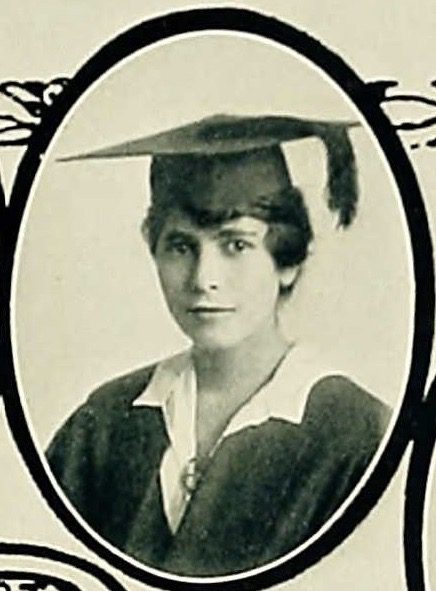Gizella Weiss
Gizella Weiss and her siblings Frank and Yolande were born in Budapest, Hungary to Jacob and Antonia Schwartz Weiss. The family made their way to Beaumont, Texas. In 1903, following Antonia’s death (reportedly the result of an “operation in hospital”), Jacob admitted the children, his three youngest, to the Home, with the endorsement of Beaumont’s B’nai B’rith Lone Star Lodge.
In 1905, at age 14, Frank was discharged to his father in Chicago. Younger sisters Gizella and Yolande remained in the Home for seven more years. During that time, they reaped the benefits of the strong academics offered at the Home’s Isidore Newman School and the leadership opportunities provided by the Home’s Golden City, an innovative program of self-government introduced by Superintendent Chester Teller in 1909.

Older girls elected by their Home peers served as officers of the Home’s Golden City Sisterhood to legislate rules and mete out discipline. They also served as “Big Sisters” to head and serve as role models for “families” consisting of six to seven girls and the youngest boys. Gizella Weiss, believed to be standing at the far left of the above photo from the Home’s 1910 annual report, presided over the Sisterhood for two years. As indicated on the blackboard and in the annual report, the other Big Sisters and Sisterhood officers in 1910 (although not identified in the photo) were: Dora Davis, Hykla Rosenfield, Lena Kantrovich, Mollie Goldberg, Ella Dorfman, Annie Horowitz, Fannie Stafsky, Freida Klein, Ruth Mayer, and Etta Berger. One year later, Yolande Weiss joined her older sister Gizelle as a Big Sister and a member of the Golden City Sisterhood.
In 1909, before being discharged to an older sibling, Yolande shared Isidore Newman School’s Founder’s Day spotlight with pay pupil Frederick D. Parham, a physician’s son. Yolande discussed “Our Opportunity for Industrial Training,” which for the girls still consisted of domestic skills, while Frederick spoke about “Our Opportunity for College Preparation.”
1912, Gizella made news as the first Home girl to graduate from Newman and also as the first Home girl to attend college. Upon leaving the Home, as reported by Superintendent Leon Volmer to the board, the sisters had written lovely letters. Volmer said that Yolande’s letter “should relieve us of all fear as to the future religious affiliations of our former ward” and that Gizella’s letter “shows such a beautiful spirit of gratitude that I desire to have you see for yourselves that the endeavor to plant a seed of gratitude in the hearts of our children has not fallen on barren soil, but is bearing beautiful fruit.”
Yolanda Weiss went on to a nursing career. In 1921, as a public health nurse for Arizona’s Maricopa County Anti-Tuberculosis Society, she completed an average of more than 13 house calls per day for the prior month, despite the fact that many of the calls were at great distance and required addressing a variety of health problems. “Nurses Averages 13 Calls Each Day,” Arizona Republican, Jan. 14, 1921.

Gizella Rochelle Weiss, as pictured in Tulane University’s Jambalaya 1916 yearbook, graduated from Newcomb College’s School of Art. Besides serving as treasurer for the art club, Gizella distinguished herself as manager of the art school basketball team. She was also a member of Nah Sukham, a Newcomb sorority founded in 1907, likely for Jewish students who were excluded from membership in the predominantly Christian national sororities.
